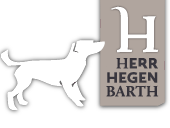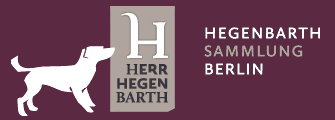
Fig. left: Thomas Baumhekel (*1963), The tree of enormous girth grows from a tender seed / The nine-storey tower emerges from a mound of earth / The journey of a thousand miles begins at your feet (Lao-tzu, Tao Te Ching, 64), 25.6.1996, ink on wood // Fig. right: Paul Klee (1879-1940), Physiognomy of a plantation, 1924, watercolour (detail)
Flying White (II)
Thomas Baumhekel: Arkona.
German Landscape in Japanese
06. June — 28. September 2018
Location:
Hegenbarth Sammlung Berlin
Nürnberger Straße 49
10789 Berlin
Open: Tuesday—Friday, 12—16 h and by appointment
Admission free, wheelchair accessible
Schedule
Opening: Wednesday, 6. June 2018 (19—21)
Opening workshop for children with (grand)parents: Sunday, 10. June (12—14)
Artist’s Talk with Thomas Baumhekel and Uta Rahman-Steinert
(Museum für Asiatische Kunst Berlin): Wednesday, 20. June 2018 (19—21)
Long Night of Museums: Saturday, 25. August (18—02), Live-performance with the Berlin artist Nicole Wendel and the dancer Audrey Rose Burden
Sunday matinee: 17. June, 15. July, 19. August and 16. September (11—14), guided tour 11.30 (3 €/person)
Chinesische Calligraphy, workshops und guided tour, information und registration: kunstvermittlung@herr-hegenbarth-berlin.de
Calligraphies and Objects by Thomas Baumhekel
Based on Romantic and Expressionist Landscapes
by German Artists
The aesthetics and pictorial narrative power of Chinese and Japanese characters are the subject of the second part of the exhibition series ‘Flying White’. In this summer exhibition, the Hegenbarth Collection Berlin shows calligraphies on paper and objects by the Dresden-based artist Thomas Baumhekel. His works were inspired by Japanese language text books as well as by German romantic and expressionist landscapes.
Bearing the charming title ‘Arkona. German landscape in Japanese’, twelve works by Thomas Baumhekel (*1963) are on display, juxtaposed with individual works by Caspar David Friedrich (1774—1840), Josef Hegenbarth (1884—1962), Paul Klee (1879—1940) and Emil Nolde (1867—1956).
The idiosyncratic graphic character is common to all of Baumhekel’s works shown here: in some instances they may confront the viewer like archaic picture ciphers or symbols. Mysterious and massive, Thomas Baumhekel writes, paints and draws his calligraphies in ‘Flying White’ fei bai 飛白, technique, on paper or wooden panels: with sparse use of ink, and rapid gestures, so that the typical fissured ink marks are recognisable.
“As an autodidact in the Chinese language, he has managed, in a short time, to create a calligraphy that is also legible to Chinese readers and has caused a sensation in Japan. Without much ado, he has simply introduced Chinese writing into modern painting as a form of expression, utilising texts he can relate to: Texts by Lao-tzu, Lin-chi, Hsüeh-Tou and from the Heart Sutra” (Thilo Götze Regenbogen, 2010).
In the meantime, topics of European cultural history such as Greek myths (based on dialogues with Leuco by Cesare Pavese, see illustration) or German landscape painting of the 19th and 20th centuries have also been introduced.
In autumn, the series ‘Flying White’ will be continued with works by the Berlin-based artist Heinz Handschick and will conclude in winter 2019 with works on paper by Corinne Laroche (Paris).








